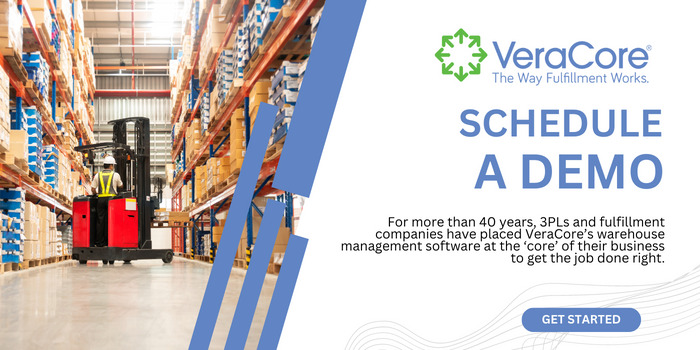A significant increase in 3PL warehouse volumes puts more pressure on third-party logistic warehouses to understand customer profitability. Because changing customer expectations are driving trends in warehouse management and 3PL fulfillment, what 3PLs charge customers must also change.
Even if you have already created a pricing model to bill for additional services and cover increasing operation costs, customer-level profitability can actually negatively impact overall warehouse profitability. Here we look at how you can calculate customer profitability to understand if you are effectively covering increasing costs.
What is Included When Calculating Warehouse Profitability?
The basic calculation for profitability is your revenue minus expenses. This general calculation, however, does not consider the costs that drive customer-level profitability. You need to drill down to the specific costs associated with each customer to complete a more accurate profitability assessment.
What is Included When Calculating Customer Profitability?
The following breakdown of costs provides insights into customer profitability:
Labor Costs
Labor or handling costs are identified by the fully burdened hourly wages involved in the customer’s fulfillment and a percentage of the supervisor’s wages based on the number of customers they oversee. You use these numbers to track hours and activities performed on behalf of the customer, including:
- Receipt of inventory
- Put away
- Picking
- Packing
- Shipping
- Management activities
- Transaction-related fees
Transaction-related fees are difficult to track unless you use a warehouse management system (WMS). Your system tracks scanning points throughout the inventory lifecycle, so you capture all chargeable actions.
The formula to calculate labor costs is: Handling Profit Margin = ((Transactional Revenue + Hourly Projects Billed) – Fully Burdened Labor Costs) / Transaction Revenue
Warehouse Costs
Your warehouse costs are based on the cost per usable/billable square foot of warehouse space. You first calculate your total amount of storage space, including vertical square footage. The formula to calculate cost per square foot is: Cost Per Square Foot = (Fully Burdened Rent or Mortgage Cost + Utilities + Insurance) / Usable Square Feet. You then create a percentage based on the space specific to each customer. You can also calculate your Space Profit Margin = (Storage Revenue – (total sq. ft. used x cost per sq.ft.)) / Storage Revenue.
Freight Costs
If you use your shipping carriers to offer your customers rate savings, a flat percentage based on the number of customers should be included in your costs.
Material Costs
All the materials used when serving customers, such as labels, pallets, and packaging, should be calculated. Unless the customer provides their own supplies, which is more common with branded packaging, you can use a flat percentage markup like your freight costs.
Overhead Costs
Several costs contribute to warehouse overhead which varies based on your specific warehouse operations. Some items are calculated as a premium, others by the hour, and still others based on a percentage. Common overhead costs include:
- Warehouse customer service/support: Time spent assisting customers can be tracked and added to your overhead cost calculations based on an hourly charge.
- 3PL warehouse management software/warehouse management system integrations: 3PL logistics software solutions, especially customized and proprietary software, contribute to the level of service you offer and could warrant a premium. The costs are based on a percentage.
- Equipment costs: Is your commitment to state-of-the-art equipment contributing to efficiency and, therefore, cost savings? If so, you should include a percentage for equipment as well.
The Final Calculation for Customer Profitability
Once you’ve tallied all the above costs, you can calculate customer profitability based on total monthly costs. Subtract those costs by the customer’s total monthly invoice and calculate the percentage using this formula: Customer Profit Margin (%) = (Total Invoice/Revenue – (Warehouse Costs + Labor costs + Overhead Costs + Freight Costs + Materials Costs) / Total Revenue
It’s best to monitor customer profitability monthly to look for fluctuations that help track potential loss contributors. You should also compare customers to learn what customers bring the most value per order. These comparisons allow you to adopt strategies to either increase profitability for underperformers or develop special offers to ensure you maintain long-term relationships with the most profitable customers. You can also consider your pricing strategies and how costs impact profit margins. These insights determine if it’s time to adjust pricing to improve profitability.
Although this process is time-consuming, it is made easier with third-party warehouse management software. It is worth the investment as you reap the 3PL benefits of easier cost tracking to improve customer profitability.
We’re Here to Help
Fulfillment software is designed to help you work smarter. It’s meant to take away some of the pressure of running a successful warehouse so you can focus on making the big decisions.
At VeraCore, we believe in proactive planning, which is why we’ve made it a point to create a smart fulfillment platform that makes running a successful 3PL easier, not more complicated. Our solution gives 3PLs like yours the ability to plan proactively and automate your processes so that your software works for you and not the other way around.


VeraCore is SaaS order and warehouse management software trusted by top fulfillment companies and 3PLs. Affordable, flexible, easy to use; VeraCore is everything you need to keep clients happy and run a lean operation.
With VeraCore, you can grow your business and handle any challenge with ease. Rules-based automation enables you to control all aspects of your warehouse operation and satisfy each of your clients’ unique requirements.
Hundreds of fulfillment service providers and 10,000+ fulfillment clients place VeraCore at the “core” of their business to get the job done right, for over 40 years.


